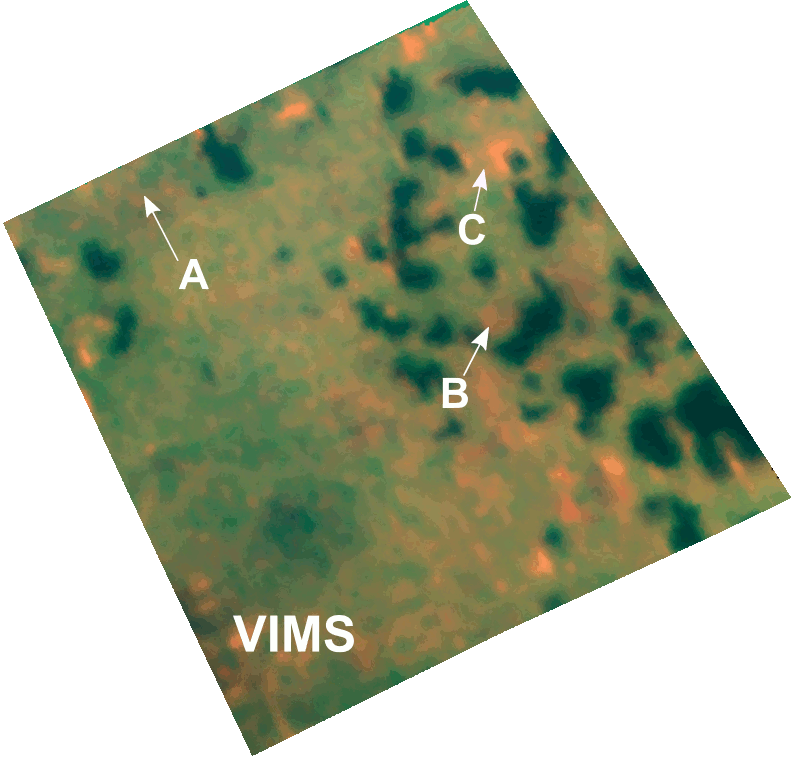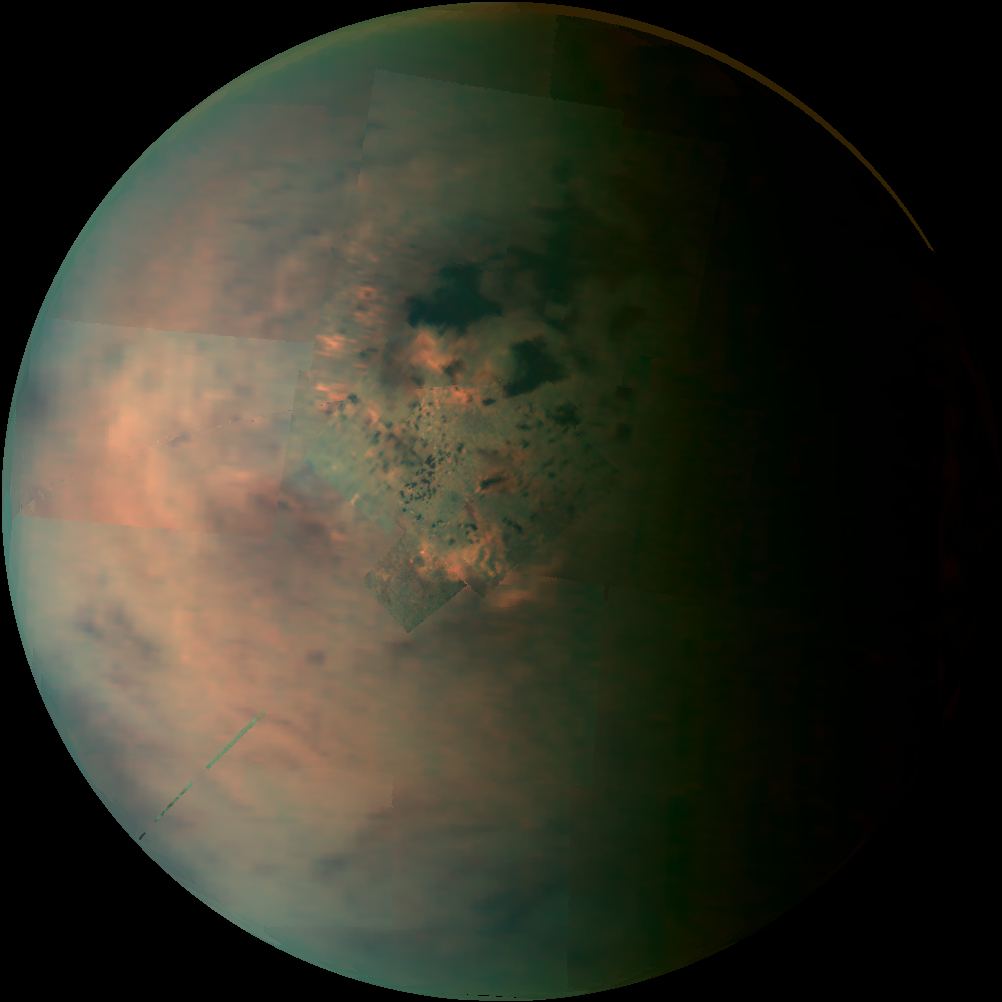Press Release
Disappearing Lakes Offer Clues to Titan’s Seasonal Cycles
The apparent seasonal disappearance of small methane lakes on Titan is giving scientists insight into the complex hydrologic cycle of Saturn’s largest moon.
Titan is the only moon in our solar system with a dense atmosphere, which supports an Earth-like cycle of ethane and methane clouds, rain, and liquid that flows into lakes and seas. Examining data from NASA’s Cassini mission, a team led by Shannon MacKenzie of the Johns Hopkins Applied Physics Laboratory in Laurel, Maryland, observed three instances where what appeared to be shallow lakes disappeared between winter and summer — a span of about seven years — in the moon’s northern regions.
“It’s the first time we’ve actually seen a lake on Titan’s surface disappear completely,” said MacKenzie, whose results appear today in Nature Astronomy. “This tells us that if evaporation is happening as slowly as models predict, then the surface must also be porous enough in these areas for liquid to drain into it for the lakes to disappear.”
Understanding the timescales for Titan’s lakes is important for modeling local weather, climate and sediment processing. Titan is the only planetary body in our solar system other than Earth known to have stable liquid on its surface. “These observations give us new insight into the behavior of liquids on Titan’s surface, and how long it takes some of these processes to occur,” MacKenzie said.
MacKenzie added that these processes likely occur at a similar rate across that region on Titan, although it would be harder to observe in the deeper northern lakes. Another Nature Astronomy paper published today, led by Marco Mastrogiuseppe of Caltech in Pasadena, California, reveals that most of the small, liquid lakes in Titan’s northern hemisphere are surprisingly deep, perched atop hills and filled mainly with methane — the first confirmation of just how deep some of the moon’s lakes are (more than 300 feet, or 100 meters) and their composition.
The abundant complex organic material accessible on and just below Titan’s surface makes it an ideal destination for studying the conditions necessary for the habitability of an extraterrestrial environment and the kinds of chemical interactions that occurred before life developed on Earth. A goal of the proposed Dragonfly mission — a rotorcraft-lander concept vying to become NASA’s next New Frontiers mission — would be to sample areas rich with the materials left by liquids that evaporated or seeped into the surface.

